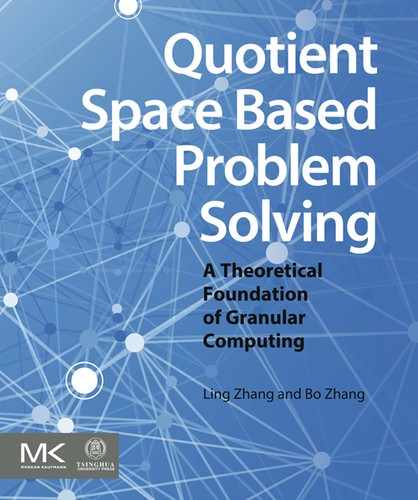Index
Note: Page numbers with “f’ denote figures; “t” tables.
A
Arcwise connectivity, 209
Attribute synthetic principle, 117–119
B
Belief function, 141
Belief theory, 132
C
Complete semi-order lattice, 14
Complexity function, 48–49
Compressed decomposition, 196–198
Configuration space, 205–206
Connected graph, 196f
Cyclic compressed decomposition, 198
D
Dimension reduction, 216–230
Disassembly directed graph, 196
E
Empirically distributed function, 272
Envelope constraint, 179
Equivalence class, 7
Equivalence relation, 334
F
Fuzzy knowledge base, 84
Fuzzy quotient space, 84–86
ɛ-similarity, 88
G
General Harr wavelet, 304
Goal evaluation function, 252–253
Granular computing, 324–326
Granular world, 325
Graph search, 294–296
H
Homomorphism transform, 160
I
Isomorphism of fuzzy subsets, 95
ɛ-similarity discrimination, 100
Isomorphism principle, 96
Isosceles distance, 81
L
Lower quotient operation, 164–166
M
MAX1 test, 272
MAX2 test, 273
Mechanical assembly planning, 194
Minimal open set, 19–20
Motion planning, 24
N
Network inference model, 135–146
O
P
Possible disassembly direction, 198
Q
Quasi quotient operation, 303
Quasi–equivalence, 317
Quotient closure operation, 318
Quotient space approximation, 300–311
R
RMG, See Rotation Mapping Graph
S
Semi-continuous mapping
Semi-order, 110
Sequential statistic, 271
Structural definition of fuzzy sets, 90–102
Successive approximation, 174–175
Synthesis of constraint, 180
Synthesis of structure, 109
T
Tolerant relations, 299
Topologic base, 113
Truth preserving property, 224
U
V
W
..................Content has been hidden....................
You can't read the all page of ebook, please click here login for view all page.
